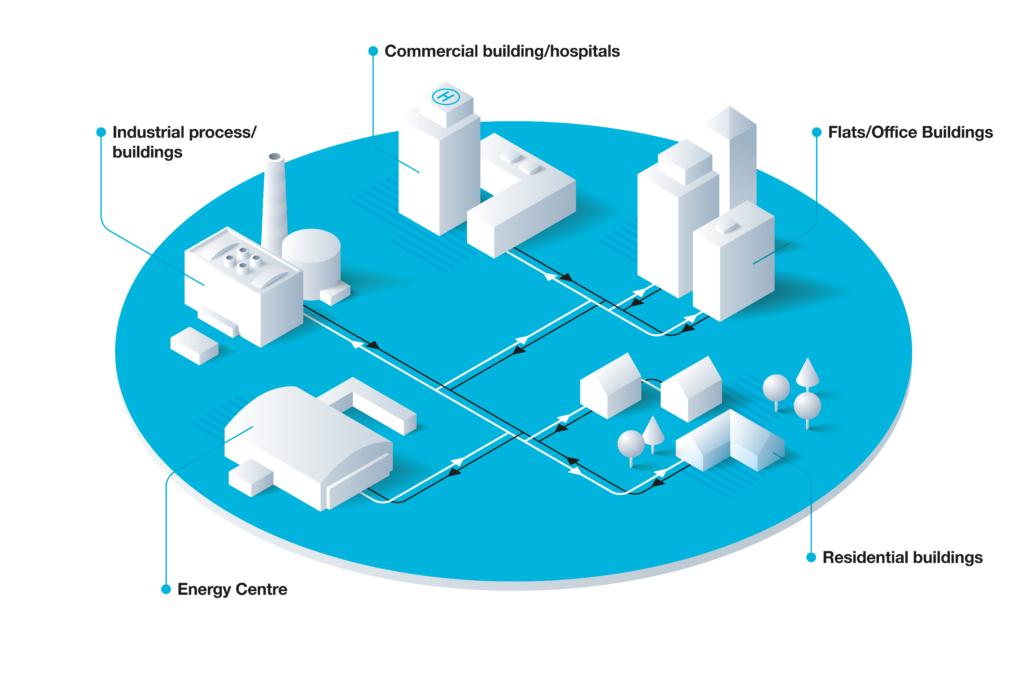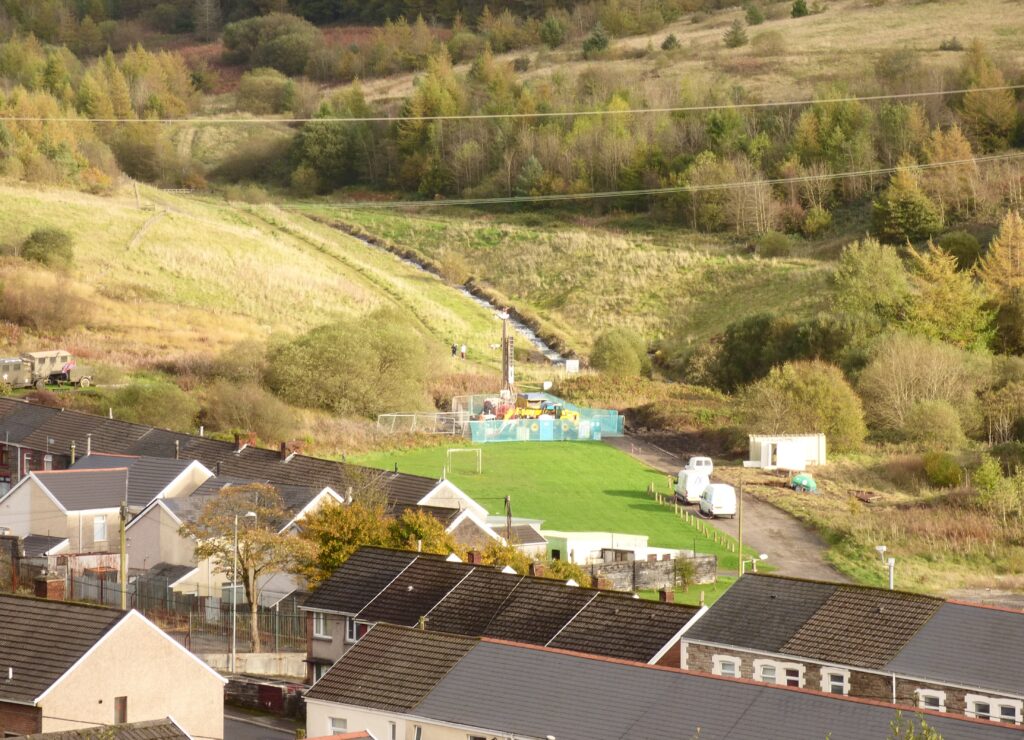Enabling Local Authorities to Adopt the Latest Innovations in Zero Carbon Heat
FLEXIS researchers from Cardiff University’s Geoenvironmental Research Centre are working alongside county councils in Wales to decarbonise heating by utilising rich Welsh mining history.
De-Risking Innovation
To achieve Net Zero by 2050 requires rapid innovation across all sectors. But innovation does not come cheap or easy; It is a risky business. In such a fast-moving and technology-led world, it’s easy to make a poor investment that appears to be a good idea today but is made obsolete by a new technology or change of direction in a few years.
This becomes especially problematic for large institutions working in the public domain, such as county councils. Regional scale energy infrastructure changes can take years to build and typically require multiple decades of useful lifespan. Knowing what lies ahead and picking the right direction are crucial to ensure effective use of the public purse.
This is where academia has a longstanding tradition of aiding the adoption of innovate new techniques and technologies. Through simulation, experimentation and demonstration, academia can de-risk investments by removing the unknown factors. Perhaps more valuable than even raw measurements and data analysis are the insights that academics can give on the direction that technologies and sectors are heading. Whilst what’s in the research lab today might not be ready for deployment right away, knowing what research is underway worldwide, the areas that major research funding is flowing into and what leading industrial partners are investing in for their research and development is the best possible forecast for which way things will go.
Finding the Right Source
An exciting area of innovation gaining traction in the race towards Net Zero is zero-carbon district heating. Describing a scenario where a group of buildings receive their heat as part of a connected network, district heating is a well-established practice. However, the possibility of using carbon free sources of energy to power district heating is grabbing the attention of local councils as a viable option for cost effective decarbonisation. It has therefore become important for local authorities to demonstrate and promote low temperature district heating networks as commonplace energy infrastructure contributing towards Government targets to reduce the overall CO2 emissions.

A zero-carbon district heating scheme starts with finding the right source of energy. One example is district heating powered by the waste heat captured from industrial processes. A significant district heating project is underway in Cardiff, South Wales, using waste heat from an incinerator plant. Although the heat energy can be considered ‘free’, this energy source has a large carbon footprint. Alternatively, hydrogen boilers can be used to deliver district heating. Whilst burning hydrogen does not produce carbon dioxide, most of the hydrogen fuel available on the market today is created through Steam Methane Reforming (SMR) which produces large volumes of CO2. Such is the carbon footprint of producing hydrogen in this way that Policy Exchange suggest blending 20% of hydrogen produced from SMR or coal gasification into the gas mains may actually increase overall emissions between 1.7% and 3.5%. Even the hydrogen created by electrolysis uses electricity from the grid which has its own carbon footprint because almost half of UK electricity comes from burning natural gas. Finding a low carbon energy source that’s ready to use today is not straight forward.
Hot Water Beneath Our Feet
However, there is an alternative which holds special promise for Wales; heat from mine water. Wales is a region steeped in centuries of mining heritage. As new energy sources emerged during the last century and mining and manufacturing moved to other parts of the world, over 250 Welsh mines were left dormant. Flooded over time by natural water seepage and geothermally warmed, the old mines now harbour a vast source of carbon-free energy.
The enabling technology used to harvest energy from the mine water is called a Ground Source Heat Pump. Heat pumps move thermal energy from one place to another. In doing so they can ‘compress’ low temperature heat into useful higher temperatures whilst consuming almost three times less electricity than would be required by a traditional electric heating element. Therefore, low temperature mine water can be converted into useful hot water upwards of 60°C in a highly energy efficient way.
Putting Innovation into Practice
FLEXIS researcher Dr Manju has experience in helping local councils adopt innovations from her work with the first Welsh demonstration of heat from mine water in the village of Caerau, located in the Welsh county of Bridgend. The work was commissioned by Bridgend County Borough Council and was carried out by a consortium led by the Geoenvironmental Research Centre, Cardiff University. The project explored the geothermal properties of the local mine water, developed a heat generation model, performed a comprehensive building review and assessed the financial viability of the scheme.
An exploratory borehole was drilled down to mine workings at a depth of 224 meters below ground. The team found the temperature of the mine water was an average of 20.3°C, significantly warmer than the surface ground water.

The study area covered 790 residential and 17 commercial properties with total peak and annual heat demands of 6.20 MW and 12,519 MWh, respectively. An in-depth energy assessment of eight traditional Welsh houses and two new houses constructed in 2017 found that the annual energy consumption could be cut in half by the addition of wall and loft insulation, significantly improving the viability of the overall district heating project.
Coming out of the work at Caerau and supporting an outline pathway project (part of Smart Living Demonstrator – Zero Carbon Area Milford Haven Waterfront), Dr Manju created a ‘CO2 calculator’ which acts as an ongoing monitoring tool for assessing the parameters needed to achieve net zero and evaluate progress towards a zero carbon zone (ZCZ). The tool can be scaled from a single piece of technology like a heat pump, to a building or an entire region. To embrace a multi-vector system that integrates power, heat and transport, a mix of renewable technologies is analysed to meet specific decarbonisation targets. Dr Manju’s CO2 calculator is now finding application in multi-vector energy projects including the Milford Haven Energy Kingdom. The £4 million project, in partnership with Pembrokeshire County Council, aims to accelerate the transition to an integrated hydrogen and renewable energy system by creating local community-based energy markets along the Milford Haven Waterway in West Wales.
Making Ends Meet
Both Caerau and Milford Haven projects are exploring new ground regarding the financial aspect of smart local energy systems. The crux of the challenge is figuring out the funding streams for these high capital expenditure local energy infrastructures and the innovative business models that go beyond simply selling energy by the kWh, exploring ideas like Energy as a Service (EaaS). New business models need to not only be attractive to customers but also work closely with the regulatory framework and ensure they protect consumers.
It is within these complex and interdisciplinary unknowns that academia can work to de-risk innovation, enabling local councils to adopt cutting edge innovations that can deliver net zero.


